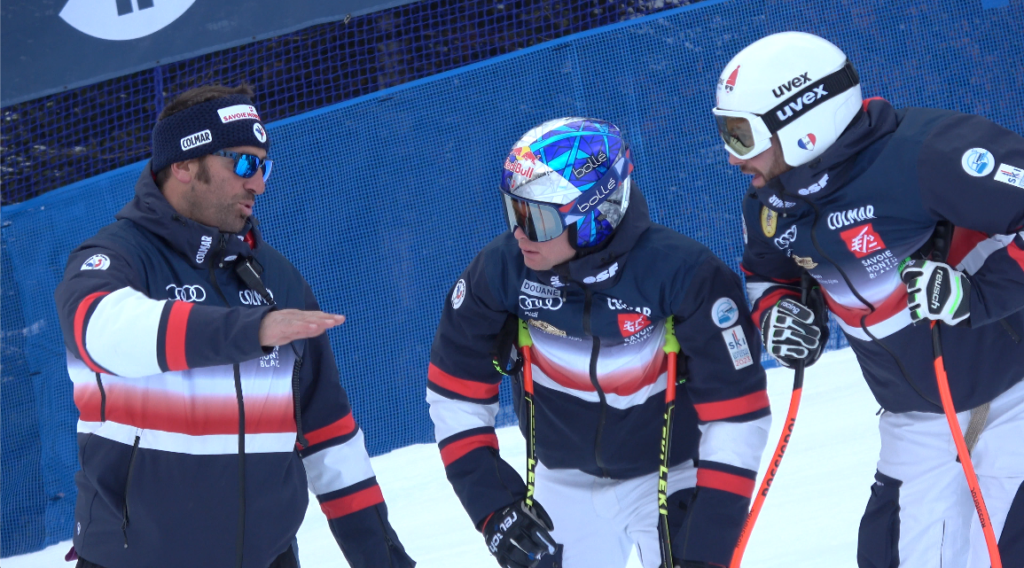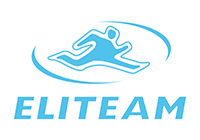
A good inspection before every training and race run is critical to success in ski racing. No matter how skilled you are as a ski racer, the best technique or fastest equipment means nothing without knowing the course inside and out and having a contingency plan for a variety of variables.
Things happen fast in ski racing. Racers make important decisions in milli-seconds the entire way down the course, every run, every time. Whether you’re slamming slalom gates at 20 mph or finding that aerodynamic position at 50 mph in a downhill, quick thinking is key. Knowing the course, optimal line, snow conditions and having a plan for everything that could happen is just as important as your technique and equipment prep. To ensure you know exactly what’s coming up, and to see it clearly in your head, it takes a slow and deliberate inspection followed by focused visualization.
NOTE: Keep in mind that inspection is just as important during TRAINING as it is for race runs. Often racers don’t take their time inspecting training courses or don’t inspect at all. By doing so, you set yourself up for failure. Not only is inspecting important to get the most out of your training, but in some cases, it can even be dangerous for a racer to run a course without a proper inspection.
INSPECTION GUIDELINES:
1. Stop at each gate and look at three things:
Line –
What is the direction you need when passing this gate? Then look back up the hill and figure out what line gets you there. Use targets (nets, trees, towers, gates) as references.
Terrain –
What is the terrain on the hill, both at and between the gates? Is there a roll, fall-away, bump, bank or other feature? How does this affect the line?
- Fall-away = You will need more room at the start of turn to set a strong edge. Otherwise, you’ll get pulled low and off-line.
- Bump = Bumps will cause you to lose pressure on the ski. To compensate, you’ll need to start your turn before the bump. This allows you to get your direction started before losing edging pressure or contact with the snow. If the bump/roll is at the gate, then you definitely need to have 90% of your turn completed before reaching the gate.
- Bank = You can use this type of terrain to initiate the turn. It’s a lot easier to initiate a turn on a bank. Use the terrain to your advantage.
Snow Conditions –
What is the snow like at the gate or in your proposed line? Check the surface for hardness, ice, cat marks, softness, grippiness and consistency of snow. Keep in mind snow conditions can vary throughout the course. Tap the tip of your pole into the snow. What does it feel like? Every type of snow condition will affect your line. If it’s icy then you’ll need more room. If it’s grippy, you can hold a tighter line. And on snowy days, watch out for powder below the race line caused by slipping. If you run a low line, this could be very bad! On these days, running a high line will be key.
2. Special Areas: Under-Gates, Combinations, Jumps, Blind Turns
Physically stand at the beginning of each turn and visualize the entire turn. Then side-slip down the line taking in visual clues. Close your eyes and visualize the gates in these special sections. For double gates, terrain changes and blind turns, ALWAYS hike back up so you can see the line completely.
3. Count Gates and Break into Sections:
Racers should also break the course into sections. For example, in a slalom course there may be four open, rhythmic gates, followed by a hairpin, followed by six back and forth gates, followed by a flush and so on. Add descriptors to sections (steep, sidehill, tight, other).
Racers should count every gate in speed events (Super-G & Downhill). That way, you and your coach can communicate easily about each gate and piece of terrain.
4. Name Course Sections:
This is especially important in speed events. This will help so much with communication. Use what you see in that section or always have standby names like Tower turn, Island turn, Meadow, Carousel, etc.
5. Compare to Past Races:
There will be gates and/or sections on courses that will be similar to other courses and race venues that you’ve raced in the past. It may help you to find the correct line, by skiing it like you did on another course in the past.
6. Use your Coaches:
Listen to your coaches and ask them questions if you’re not completely sure how to run a gate, handle challenging terrain or navigate a tough section. And don’t be afraid to offer your own thoughts on line as the more ideas and discussion the better!
7. Visualize Throughout:
It’s important to take time throughout your inspection to visualize the course. This cements the inspection and plan into your brain. We’ll have more on visualization in an upcoming Newsletter.
By taking inspection seriously in training, you’ll get better and better at it. With practice, it will get easier and become an added strength to your skiing. The better you get at inspection, the more confident you will be in the starting gate, and the more time you will save during hectic race days. Take advantage of every course to master your inspection skills.

